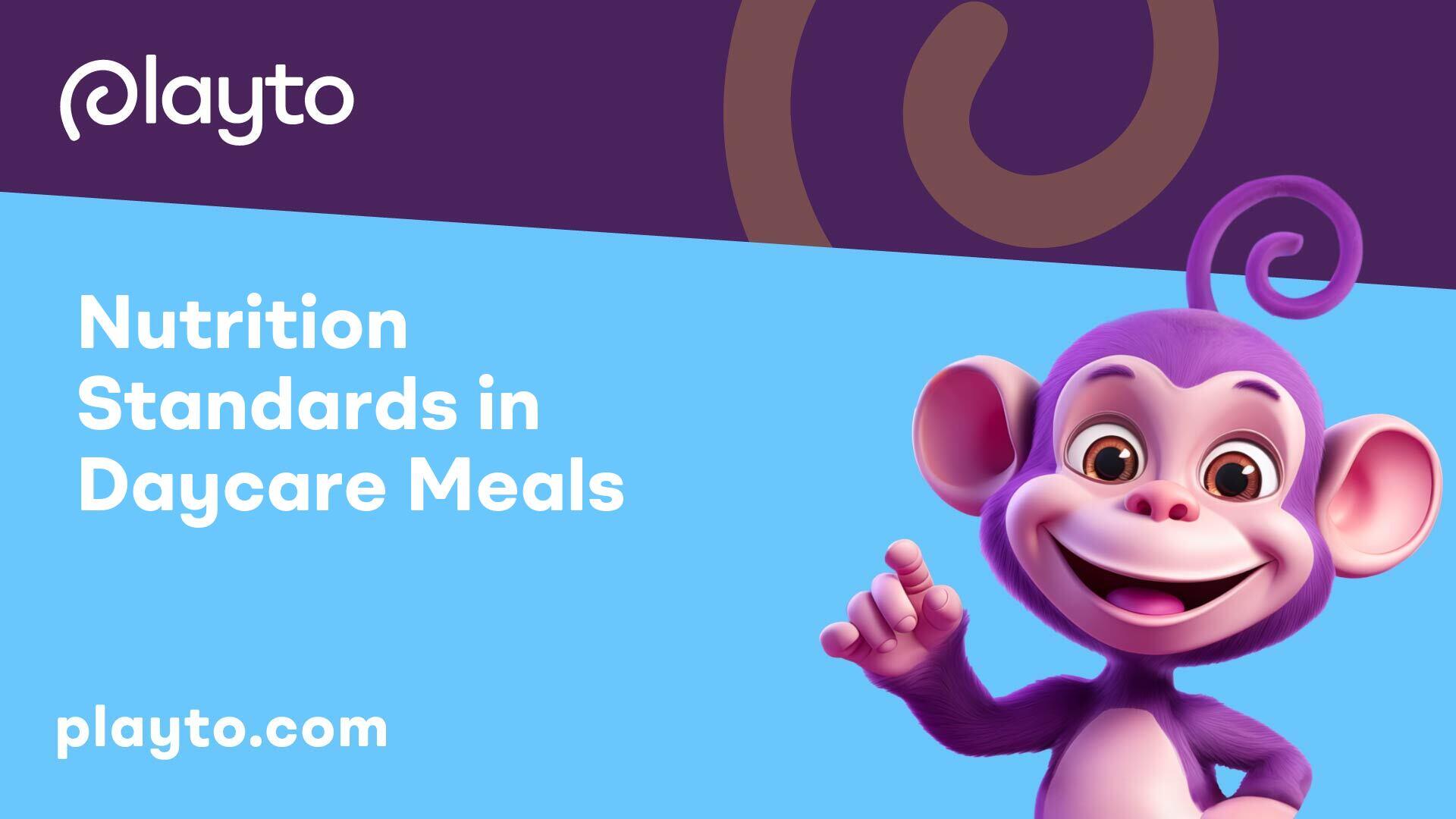
Benefits of Kids Packing Lunches
When it comes to packing the perfect daycare lunch, involving children in the process offers a multitude of benefits that extend beyond just the meal itself. Let's delve into two key advantages: developing independence and learning about nutrition.
Developing Independence
Encouraging children to pack their own lunches fosters a sense of independence and responsibility. Even toddlers and preschoolers can participate in simple tasks like choosing items for their lunch boxes or assisting with packing, as highlighted by Real Mom Nutrition. This hands-on involvement empowers children to take charge of their meals and builds confidence in their ability to make choices.
By engaging in the lunch-packing process, children develop essential life skills such as planning, organizing, and decision-making. As they become more adept at packing their lunches, they gain a sense of achievement and self-sufficiency. This independence not only extends to meal preparation but also carries over to other aspects of their daily routine, promoting autonomy and self-reliance.
Learning About Nutrition
Through the act of packing their lunches, children have the opportunity to learn about nutrition in a practical and engaging way. By selecting items for their meals, children become more aware of the components of a balanced diet and the importance of incorporating a variety of foods into their meals. This hands-on experience allows them to understand the nutritional value of different food choices and how these choices impact their overall well-being.
Empowering children to make decisions about their lunches helps them develop an appreciation for healthy eating habits and the role that food plays in fueling their bodies. They begin to recognize the link between the foods they consume and their energy levels, concentration, and overall health. This awareness sets a strong foundation for making informed dietary choices as they grow and mature, enabling them to develop lifelong habits that promote health and well-being.
By involving children in the lunch-packing process, caregivers and parents not only support their development but also instill valuable skills and knowledge that will benefit them in the long run. Encouraging independence and fostering an understanding of nutrition through lunch packing sets children on a path towards making informed choices and taking ownership of their health and well-being.

Involving Parents in Lunch Packing
When it comes to packing the perfect daycare lunch, involving parents in the lunch packing process plays a crucial role in promoting closeness and teaching children healthy choices. By engaging parents in the preparation and selection of meals, children not only feel connected but also learn valuable lessons about nutrition and food diversity.
Promoting Closeness
The involvement of parents in packing lunches with their children fosters a sense of closeness and connection. By collaboratively planning and preparing meals, parents can create a bonding experience with their children, making them feel included and valued in decision-making processes regarding their meals [1]. This shared activity can strengthen the parent-child relationship and provide a platform for open communication about food preferences, making the lunch packing experience an enjoyable and educational opportunity for both parties.
Teaching Healthy Choices
Through the act of packing lunches together, parents have a unique opportunity to impart important lessons about healthy eating habits to their children. By involving kids in the selection of food items and discussing the nutritional value of various ingredients, parents can empower children to make informed choices about their meals. This hands-on approach not only educates children about the importance of balanced nutrition but also instills a sense of responsibility and autonomy when it comes to food selection.
Additionally, teenagers can benefit greatly from being involved in meal planning, grocery shopping, and cooking. Encouraging teenagers to develop basic culinary skills equips them with essential life skills that will serve them well as they transition into adulthood and live independently. It's crucial for parents to create a food-positive environment at home, avoiding labeling foods as "good" or "bad," to foster a healthy relationship between their teenagers and food.
By involving parents in lunch packing and encouraging healthy eating habits, children not only enjoy nutritious meals but also develop a positive attitude toward food and enhance their relationship with their parents through shared meal preparation experiences.

Nutrition Standards in Daycare Meals
Ensuring that daycare meals meet proper nutrition standards is essential for supporting the health and well-being of children. These standards are based on the Dietary Guidelines for Americans and recommendations from the National Academy of Medicine. By following these guidelines, daycare providers can promote healthy habits and contribute to the overall development of the children in their care.
Based on Dietary Guidelines
The nutrition standards for meals and snacks served in daycare settings align with the Dietary Guidelines for Americans. These guidelines advocate for a balanced diet that includes a variety of food groups to ensure adequate nutrient intake. Daycare providers play a key role in offering meals that are nutritionally balanced and support the growth and development of young children.
The standards emphasize the importance of incorporating a wide range of vegetables, fruits, whole grains, lean proteins or meat alternatives, and low-fat or fat-free dairy products in daycare meals. By following these guidelines, daycare providers can help children establish healthy eating habits early on, setting the foundation for a lifetime of good nutrition.
Supporting Healthy Habits
Incorporating nutrition standards into daycare meals not only ensures that children receive the necessary nutrients for growth and development but also helps instill healthy eating habits. By providing balanced and nutritious meals, daycare providers can support the overall well-being of children and contribute to the prevention of diet-related health issues.
Furthermore, by adhering to these standards, daycare settings can create a supportive environment that encourages children to make healthy food choices. Promoting wellness, health, and development through nutritious meals fosters positive eating behaviors and sets the stage for a lifetime of good nutrition.
By following nutrition standards based on established guidelines, daycare providers can play a vital role in shaping the dietary habits of young children and ensuring that they receive the nutrients needed for optimal growth and development. These standards not only support the physical health of children but also contribute to their overall well-being and long-term health outcomes.
Packing Nutritious Lunches
Ensuring children have a well-rounded and nutritious lunch is crucial for their growth and development. When it comes to packing the perfect daycare lunch, there are key considerations to keep in mind to meet their nutrient needs while also making mealtime enjoyable.
Variety and Nutrient Needs
Packing a nutritious lunch for children, whether toddlers, preschoolers, or school-aged, must ensure that all their nutrient needs are met. It's important to include a variety of food groups to provide essential vitamins, minerals, and macronutrients. According to My Little Eater, including variety in children's lunches can be as simple as making their favorite sandwich on a wrap or pita instead of bread, or changing the type of cheese served from one week to the next. Exposure to different types of food can help expand their food preferences and foster healthier eating habits.
To cover their nutrient needs, consider incorporating the following into your child's lunch:
- Protein sources such as lean meats, eggs, legumes, or dairy products.
- Whole grains like whole wheat bread, brown rice, or quinoa.
- Fruits and vegetables for essential vitamins and minerals.
- Healthy fats like avocado, nut butter, seeds, or fatty fish [3].
By providing a variety of foods, you can ensure your child receives a well-balanced meal that supports their growth and energy levels throughout the day.
Lunchtime Considerations
Aside from nutrient content, there are practical considerations to take into account when packing a daycare lunch. Consider the following tips to make lunchtime a pleasant and stress-free experience for your child:
- Opt for easy-to-eat foods that are manageable for little hands and mouths.
- Include a mix of textures and flavors to make the meal more enjoyable.
- Pack foods that can be stored safely at room temperature to maintain freshness.
- Consider any dietary restrictions or food allergies that your child may have and pack accordingly.
To cater to picky eaters, offering a mix of familiar favorites with new and exciting items can encourage them to try different foods. Remember, mealtime should be a positive experience, so aim to create a relaxed environment where your child can explore new tastes and textures without pressure.
By focusing on variety and nutrient needs while considering practical lunchtime aspects, you can pack a nutritious and satisfying daycare lunch that supports your child's health and well-being. Experiment with different food combinations and involve your child in the selection process to make lunchtime a fun and engaging experience.
Tips for Picky Eaters
When it comes to catering to picky eaters, mealtime can often feel like a challenge. However, incorporating fun lunch ideas and creative presentations can make the dining experience more enjoyable and appealing for children who are selective with their food choices. Here are some tips to make lunchtime more exciting for picky eaters:
Fun Lunch Ideas
One effective way to entice picky eaters is by offering fun and visually appealing lunch options. Utilizing cookie cutters to transform sandwiches into playful shapes or creating fruit and vegetable kebabs can make mealtime more engaging [4]. These creative touches can capture a child's interest and encourage them to try new foods.
Incorporating dips like ranch dressing or peanut butter for vegetables or crackers can also be a hit with picky eaters. Many children enjoy interactive eating experiences, and providing dipping sauces in small containers within a bento box can make lunchtime more interactive and enjoyable.
Creative Presentation
The way food is presented can significantly influence a child's willingness to try new foods. If you have a picky eater on your hands, consider the presentation of the lunch. Using a bento lunch box with individual compartments can help in separating different food items, preventing them from touching if the child prefers. This method also allows for a variety of items to be included in the lunch, giving the child options to choose from.
Moreover, including a favorite food item that the child enjoys, such as a homemade pizza on whole-grain pita bread with healthy toppings, can make the lunch more appealing for picky eaters. Allowing children to assemble their own lunch, similar to a DIY Lunchable, can empower them to make food choices and create a meal that they find exciting and satisfying.
By implementing these tips for fun lunch ideas and creative presentation, you can make mealtime an enjoyable and positive experience for picky eaters. Encouraging children to explore new foods in an engaging and interactive way can help broaden their palate and foster a healthier attitude toward mealtime.
Meal Safety and Regulations
Ensuring the safety and adherence to regulations in daycare meals is essential for the well-being of children. Daycare centers play a vital role in promoting wellness, health, and development by providing nutritious foods to children, aligning with compliance requirements and mealtime policies.
Compliance Requirements
Daycare centers that offer meals through the Child and Adult Care Food Program (CACFP) adhere to specific compliance requirements set by regulatory bodies, such as the US Department of Agriculture (USDA). These requirements are designed to ensure that meals served meet the necessary standards for nutrition and health support.
The nutrition standards for daycare meals are based on the Dietary Guidelines for Americans, recommendations from the National Academy of Medicine, and stakeholder input. These standards emphasize the provision of a variety of nutritious foods, including vegetables, fruits, whole grains, lean proteins, and low-fat dairy, while restricting added sugars and saturated fats [5]. Daycare operators have access to resources and training to assist them in meeting these standards and serving healthy, balanced meals to children in their care.
Mealtime Policies
Daycare centers are required to follow specific mealtime policies to ensure that children receive varied, nutritious, and appropriately timed meals and snacks. These policies include portion sizes, nutritional requirements, and meal pattern guidelines outlined in the regulations set by governing bodies [6].
By upholding compliance requirements and mealtime policies, daycare centers play a crucial role in instilling healthy habits in children, laying the foundation for lifelong wellness and promoting positive food choices. It is essential for daycare staff to prioritize the nutritional quality and safety of meals served to support the overall health and development of the children under their care. For more tips on promoting healthy habits in daycare, check out our article on supporting language development in daycare.
Healthy Lunch Recipes
Providing children with nutritious and balanced meals is essential for their growth and development. When packing lunches for daycare, incorporating high protein options and healthy fats can help ensure that children receive the nutrients they need to stay energized and focused throughout the day.
High Protein Options
Including high-protein foods in daycare lunches is crucial for supporting children's growth and providing them with sustained energy. Some lunch box-appropriate high protein foods that kids enjoy include:
Protein Sources
- Hard-Boiled Eggs
- Cheese
- Greek Yogurt
- Hummus
- Deli Meat
- Leftover Meats (Chicken, Beef, Pork)
These protein-rich options not only help keep hunger at bay but also contribute to muscle development and overall health. By incorporating a variety of protein sources into your child's lunch, you can ensure they receive a well-rounded diet that supports their physical and cognitive development.
Incorporating Healthy Fats
Healthy fats are another essential component of a well-rounded daycare lunch. Not only do healthy fats provide essential nutrients, but they also help keep children feeling full and satisfied until their next meal. When preparing lunches, consider including the following healthy fat options:
Healthy Fats Sources
- Avocado
- Guacamole
- Nut or Seed Butters
- Nuts and/or Seeds
- Salad with a Homemade Oil-Based Dressing
- Fatty Fish (Salmon, Mackerel)
Incorporating these healthy fats not only adds flavor and variety to meals but also supports brain development and overall health. By making conscious choices to include healthy fats in daycare lunches, you can help your child maintain optimal energy levels and focus throughout the day.
By incorporating high-protein options and healthy fats into daycare lunches, parents can ensure that their children are receiving the essential nutrients they need to thrive. Experiment with different recipes and ingredients to create flavorful and nutritious meals that cater to your child's tastes and dietary needs, setting them up for a day full of energy and vitality.
Fun and Interactive Lunch Ideas
Enhancing the lunch experience for children at daycare involves incorporating fun and interactive elements into their meals. This not only makes mealtime enjoyable but also encourages kids to develop healthy eating habits. In this section, we will explore engaging recipes and methods to involve children in the lunch packing process.
Engaging Recipes
Creating engaging and nutritious recipes for daycare lunches can foster excitement and interest in mealtimes. Fun and interactive lunch ideas can inspire children to explore different foods and flavors while ensuring they receive the essential nutrients they need to grow and thrive.
One creative lunch idea is to involve kids in making their own DIY Lunchables. By providing a variety of ingredients like whole-grain crackers, cheese slices, lean protein such as turkey or chicken, and fresh fruits and vegetables, children can assemble their own personalized lunch combinations. This not only empowers them to make choices about their meals but also enhances their creativity and independence.
Involving Children in the Process
Involving children in the lunch packing process can be a rewarding experience that promotes a sense of ownership and responsibility over their meals. Allowing kids to participate in selecting ingredients, assembling their lunches, and even packing their lunch boxes can increase their engagement with food and foster a positive relationship with nutrition.
Encouraging children to choose their favorite foods to include in their lunches can make mealtimes more enjoyable, especially for picky eaters. For example, incorporating a beloved food like pizza on whole-grain pita bread with nutritious toppings can entice children to eat a balanced meal. Additionally, offering dips like ranch dressing or peanut butter for veggies or crackers can add a fun element to the meal, as many children enjoy dipping their food.
To further enhance the appeal of lunches for kids, consider using cookie cutters to create sandwiches in playful shapes or assembling fruit and vegetable kebabs. The visual presentation of food plays a significant role in enticing children to try new foods and can make mealtime more engaging. Additionally, exploring recipes from blogs like Yummy Toddler Food can provide specific ideas for fun and nutritious lunch options that children will love to eat.
By incorporating engaging recipes and involving children in the lunch packing process, daycare providers and parents can create an enjoyable and interactive mealtime experience that nurtures children's appreciation for healthy eating habits. By making lunches fun and exciting, children are more likely to develop positive associations with food and embrace a varied and nutritious diet.
References
[1]: https://www.realmomnutrition.com/kids-pack-own-lunch/
[2]: https://www.sarahremmer.com/healthy-school-lunches-for-teenagers
[3]: https://mylittleeater.com/lunchpackingguide
[4]: https://justcook.butcherbox.com/school-lunch-ideas-for-picky-eaters
[5]: https://www.fns.usda.gov/cacfp/nutrition-standards
[6]: https://emanuals.jfs.ohio.gov/ChildCare/ChildCareCenter/Rules/
